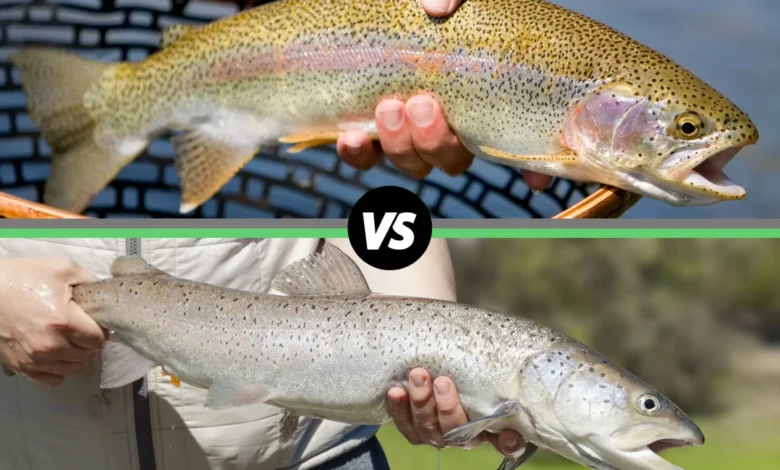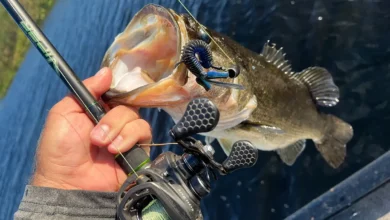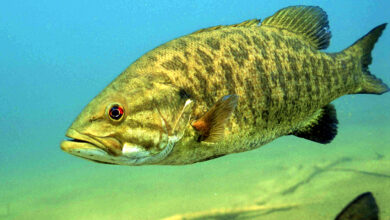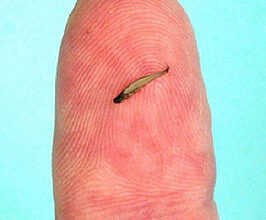Salmon Trout: What Makes This Fish So Special?

Have you ever sat at a restaurant, seen salmon trout on the menu, and wondered, “Wait, is that salmon or trout?” You’re not alone. The name can be a little confusing, but the fish itself is fascinating. Whether you’re curious about its taste, how it’s caught, or its role in the culinary world, salmon trout has a story worth exploring.
This article takes you on a friendly journey into the world of salmon trout. We’ll talk about what it is, where it comes from, how it’s cooked, and why it’s gaining popularity among both chefs and home cooks. By the end, you’ll know exactly why salmon trout deserves a spot on your plate.
What Exactly Is Salmon Trout?
Let’s start with the basics. Salmon trout is not a completely different species. In fact, it’s a common name for rainbow trout that grow in saltwater or brackish water. When rainbow trout migrate to larger bodies of water like seas and return to rivers to spawn, they develop characteristics similar to salmon. That’s why the name salmon trout makes sense—it’s like a trout that borrowed some traits from salmon.
The confusion also comes from the fact that both salmon and trout belong to the same family, Salmonidae. This family includes a variety of fish that share similarities in appearance and lifestyle. Because of this, people in different regions may call the same fish by different names.
Why the Name Causes Confusion
Imagine you’re at a seafood counter. You see salmon fillets on one side and trout fillets on the other. Then the label “salmon trout” appears, and suddenly you’re unsure which basket to pick up. This happens because the naming depends on regional traditions.
In some countries, particularly in Europe, salmon trout usually refers to large rainbow trout raised in sea pens. In other regions, people may use the term loosely to describe any trout species that looks or tastes like salmon. The result? A lot of head scratching among consumers.
Appearance: How to Spot Salmon Trout
At first glance, salmon trout looks a lot like regular salmon. The flesh tends to be a vibrant pink or orange color thanks to the natural pigments from their diet, especially if they consume crustaceans. However, the color may be lighter compared to wild salmon.
When you look closely, you’ll notice subtle differences. The body is slimmer, and the texture of the fillet is slightly finer. Once cooked, salmon trout maintains a firm yet delicate feel, making it an excellent substitute for salmon in many dishes.
Taste and Texture: A Culinary Delight
Now comes the big question—what does salmon trout taste like? If you love salmon, you’ll likely enjoy salmon trout too. It has a mild, slightly nutty flavor that is less intense than salmon but richer than typical trout.
The texture is soft yet flaky, which makes it versatile for cooking. Some chefs describe salmon trout as the “best of both worlds.” You get the rich mouthfeel of salmon without the overly oily taste, and you get the subtle elegance of trout without the blandness.
Nutritional Benefits of Salmon Trout
Beyond taste, salmon trout is also a nutritional powerhouse. It’s packed with protein, making it a great choice for muscle health and recovery. It’s also loaded with omega-3 fatty acids, which support heart health, brain function, and even glowing skin.
Other key nutrients include:
- Vitamin D for bone strength.
- Vitamin B12 for energy and nervous system health.
- Selenium for immune support.
Eating salmon trout regularly can be part of a balanced diet, especially for people looking to add more lean and healthy protein sources.
Where Salmon Trout Is Found
Salmon trout can be both wild-caught and farm-raised. Wild salmon trout are found in rivers that connect to seas, especially in areas where rainbow trout migrate. However, the majority of salmon trout sold commercially today are farmed.
Fish farms, especially in Europe and South America, raise salmon trout in controlled environments. This allows for consistent quality and supply. While some people prefer wild-caught fish, farm-raised salmon trout still offer excellent flavor and nutrition.
How Salmon Trout Is Caught
Wild salmon trout are usually caught using sustainable methods like nets or fishing lines. However, because the population is not as abundant as salmon, fishing for them is less common.
Farm-raised salmon trout, on the other hand, are harvested carefully to maintain freshness. They’re often raised in clean sea pens where they can swim freely but are also monitored for health. This combination creates a balance between natural behavior and human care.
Salmon Trout in Culinary Traditions
Different cultures use salmon trout in their own unique ways. In France, it is often grilled or pan-seared with delicate herbs. In Scandinavian countries, you may find it smoked or cured, similar to gravlax. In the United States, salmon trout often substitutes salmon in recipes because of its similar taste and lower price.
Chefs love working with salmon trout because it holds flavors well. Whether marinated with citrus, paired with creamy sauces, or smoked over wood, salmon trout adapts beautifully.
Cooking Salmon Trout at Home
Cooking salmon trout at home is surprisingly simple. You don’t need to be a professional chef to make a delicious dish. Here are a few popular methods:
- Grilling – A quick sear on the grill brings out its natural flavors.
- Baking – Baking with lemon slices and herbs makes a healthy, hands-off meal.
- Pan-searing – A crispy skin finish with butter and garlic elevates the taste.
- Smoking – Home smokers or even stovetop smoking pans can create gourmet results.
The key is not to overcook it. Salmon trout tastes best when it stays moist and tender.
Comparing Salmon Trout to Salmon
So how does salmon trout compare to regular salmon?
- Price – Salmon trout is often more affordable than premium salmon.
- Flavor – Salmon is richer and oilier, while salmon trout is lighter and slightly sweeter.
- Availability – Salmon is widely available worldwide, but salmon trout is more common in certain regions.
- Cooking versatility – Both can be cooked the same way, but salmon trout tends to cook faster due to its finer texture.
Both fish are excellent choices, so it often comes down to personal preference or what’s available in your market.
Sustainability and Salmon Trout
Sustainability has become an important topic in seafood. Fortunately, salmon trout farming is often considered more environmentally friendly than some salmon farming practices. Because trout require slightly less feed and adapt well to farming, their production has a smaller footprint.
Of course, not all farms are equal. Responsible aquaculture, where farms prioritize clean water and fish health, ensures that salmon trout can be enjoyed without harming ecosystems.
Health Considerations
While salmon trout is generally healthy, there are a few things to keep in mind. Farmed fish may sometimes contain higher levels of certain additives compared to wild fish. However, many farms now focus on providing cleaner feed and better living conditions to minimize this issue.
As with any fish, moderation is key. Enjoying salmon trout a few times a week is a safe and healthy choice for most people.
Salmon Trout in Restaurants
If you’ve noticed salmon trout on restaurant menus more often, you’re not imagining it. Chefs are increasingly embracing it as a sustainable alternative to salmon. Restaurants that want to offer seafood with great taste but a smaller environmental footprint often highlight salmon trout as a star dish.
From sushi bars to fine dining, salmon trout appears in many creative forms. You might see it as tartare, grilled fillets, or smoked slices on a charcuterie board.
Fun Facts About Salmon Trout
Let’s take a quick break for some interesting tidbits:
- Salmon trout can live in both freshwater and saltwater.
- The flesh color can range from pale pink to deep orange depending on diet.
- It is sometimes called “steelhead trout” when referring to sea-run rainbow trout.
- Salmon trout farming is one of the fastest-growing parts of aquaculture worldwide.
These fun facts make salmon trout even more intriguing, don’t they?
Why Home Cooks Love Salmon Trout
More home cooks are turning to salmon trout for their weekly meals. Why? Because it combines affordability with versatility. You can make a quick weekday dinner or a fancy weekend feast without much hassle.
Its mild flavor also makes it a family-friendly option. Even people who don’t usually like strong-tasting fish find salmon trout approachable.
Storage and Freshness Tips
If you buy salmon trout, keep freshness in mind. Always check for clear eyes, firm flesh, and a fresh ocean-like smell. Store it in the refrigerator and cook within one to two days for the best results.
You can also freeze salmon trout. Just wrap it tightly in plastic and store it in the freezer for up to three months. When ready to use, thaw it slowly in the fridge.
The Future of Salmon Trout
Looking ahead, salmon trout is set to play a bigger role in global seafood markets. With growing concerns about sustainability, overfishing, and climate change, salmon trout provides a balanced solution. Its adaptability to farming and delicious taste make it a smart choice for the future.
We can expect to see more innovative recipes, better farming practices, and increased global availability. For seafood lovers, that’s exciting news.
Final Thoughts: Why Salmon Trout Deserves a Place on Your Table
So, what have we learned about salmon trout? It’s not just a confusing name on a menu. It’s a unique fish that combines the qualities of both salmon and trout. With its delicate taste, nutritional benefits, and culinary versatility, it’s no wonder more people are discovering and loving it.
Next time you see salmon trout at your local market or restaurant, give it a try. You might just find your new salmon trout



